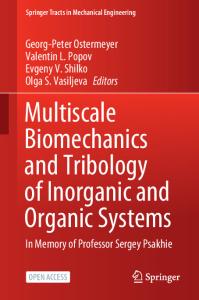Mechanical properties enhancement of cast Al-8.5Fe-1.3V-1.7Si (FVS0812) alloy by friction stir processing
- PDF / 2,637,862 Bytes
- 12 Pages / 595.276 x 790.866 pts Page_size
- 34 Downloads / 342 Views
(2020) 20:102
ORIGINAL ARTICLE
Mechanical properties enhancement of cast Al‑8.5Fe‑1.3V‑1.7Si (FVS0812) alloy by friction stir processing Z. Nouri1 · R. Taghiabadi1 · M. Moazami‑Goudarzi2 Received: 13 May 2020 / Revised: 3 August 2020 / Accepted: 24 August 2020 © Wroclaw University of Science and Technology 2020
Abstract This study was conducted to investigate the capability of multi-pass friction stir processing (FSP) on microstructure modification and mechanical properties improvement of FVS0812 alloy. FSP was performed at different rotation speeds (1250, 1600, 2000, and 2500 rpm) and traverse speeds (8, 12, and 25 mm/min) for one, two, and four passes. According to the results, applying single-pass FSP at optimized conditions (i.e. 1600 rpm and 12 mm/min) enhanced the tensile strength, fracture strain, and microhardness of the alloy by about 1020, 1050, and 60%, respectively. This improvement can be mainly attributed to the intense breakage and uniform distribution of θ-Al13Fe4 and α-Al12(Fe,V)3Si intermetallics within the matrix, formation of ultrafine recrystallized grains, and elimination of casting defects. Increasing the number of FSP passes up to four slightly decreased the average size of intermetallic particles, but significantly improved their distribution within the matrix which led to 18 and 200% improvement of tensile strength and fracture strain of one-pass FSPed sample, respectively. The fractography results also revealed that multi-pass FSP has changed the fracture mode of Al-8.5Fe-1.3V-1.7Si alloy from low-energy brittle to a more ductile-dimple fracture. Keywords Friction stir processing (FSP) · Al-Fe-V-Si · Intermetallic · Mechanical properties
1 Introduction Due to their high specific strength, excellent castability, good weldability, and high corrosion resistance, commercial Al alloys have been extensively employed in different industrial fields such as automotive, aerospace, and aviation [1]. However, owing to dissolution and/or coarsening of the strengthening precipitates and/or growth of grains, their application is usually limited to the temperatures below 150 °C [2, 3]. Therefore, to increase the service temperature of Al alloys, transition metals such as Fe, Ni, and V are added to their composition. These elements have very low * R. Taghiabadi [email protected] Z. Nouri [email protected] M. Moazami‑Goudarzi [email protected] 1
Department of Materials Science and Metallurgy, Imam Khomeini International University, Qazvin, Iran
Department of Materials Science, Islamic Azad University, Science and Research Branch, Tehran, Iran
2
solid-solubility in Al. Therefore, upon solidification, they are severely segregated to the remaining liquid leading to the crystallization of intermetallics rich in transition metals in the microstructure. These precipitates are highly stable at high-temperature services, thereby substantially enhancing the alloy properties up to 450 °C provided that they are finely distributed within the matrix [3] Therefore, high-temperature Al alloys
Data Loading...











